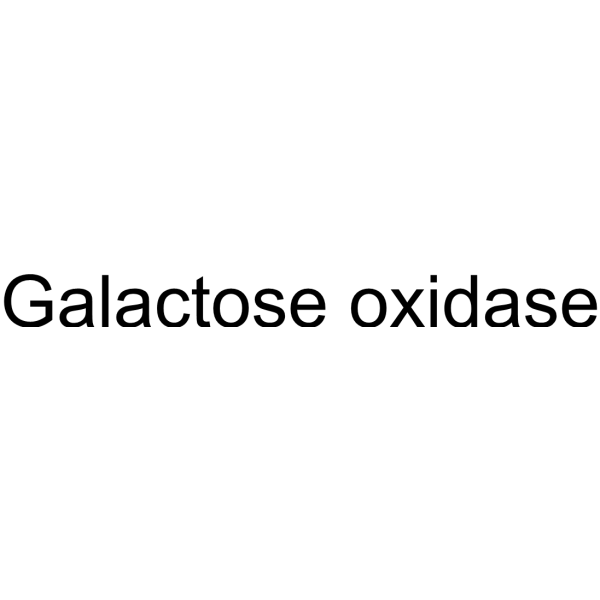半乳糖氧化酶

半乳糖氧化酶结构式

|
常用名 | 半乳糖氧化酶 | 英文名 | Galactose oxidase |
|---|---|---|---|---|
| CAS号 | 9028-79-9 | 分子量 | N/A | |
| 密度 | N/A | 沸点 | N/A | |
| 分子式 | N/A | 熔点 | N/A | |
| MSDS | 中文版 美版 | 闪点 | N/A |
半乳糖氧化酶用途真菌中的半乳糖氧化酶(GOase)经常用于生化研究。半乳糖氧化酶是一种II型铜金属酶,它含有一种多肽。半乳糖氧化酶催化伯醇的双电子氧化为相应的醛,并将二氧还原为过氧化氢[1]。 |
| 中文名 | 半乳糖氧化酶 |
|---|---|
| 英文名 | Galactose oxidase |
| 描述 | 真菌中的半乳糖氧化酶(GOase)经常用于生化研究。半乳糖氧化酶是一种II型铜金属酶,它含有一种多肽。半乳糖氧化酶催化伯醇的双电子氧化为相应的醛,并将二氧还原为过氧化氢[1]。 |
|---|---|
| 相关类别 | |
| 参考文献 |
| 储存条件 | -20°C密闭,避光,通风干燥处 |
|---|---|
| 稳定性 | Application Useful in the determination of lactose. Preparation Note Chromatographically purified Unit Definition One unit will produce a ΔA425 of 1.0 per min at pH 6.0 at 25 °C, in a peroxidase and o-tolidine system. Reaction volume = 3.4 mL. Light path = 1 cm. Physical form Lyophilized, contains buffer salts and stabilizer Biochem/physiol Actions 2-Deoxy-D-galactose, lactose, melibiose, raffinose and stachyose react with galactose oxidase in the peroxidase:o-tolidine system. Essentially no oxidation of D-glucose, L-galactose, L-arabinose or D-glucuronate has been observed. |
| 更多 | 1. 性状:冻干粉末。 2. 密度(g/mL,25℃):未确定 3. 相对蒸汽密度(g/mL,空气=1):未确定 4. 熔点(ºC):未确定 5. 沸点(ºC,常压):未确定 6. 沸点(ºC,5.2kPa):未确定 7. 折射率:未确定 8. 闪点(ºC):未确定 9. 比旋光度(º):未确定 10. 自燃点或引燃温度(ºC):未确定 11. 蒸气压(kPa,20ºC):未确定 12. 饱和蒸气压(kPa,60ºC):未确定 13. 燃烧热(KJ/mol):未确定 14. 临界温度(ºC):未确定 15. 临界压力(KPa):未确定 16. 油水(辛醇/水)分配系数的对数值:未确定 17. 爆炸上限(%,V/V):未确定 18. 爆炸下限(%,V/V):未确定 19. 溶解性:溶于水 |
| 危险品运输编码 | NONH for all modes of transport |
|---|
|
Functional and anionic cellulose-interacting polymers by selective chemo-enzymatic carboxylation of galactose-containing polysaccharides.
Biomacromolecules 13(8) , 2418-28, (2012) Carboxylated, anionic polysaccharides were selectively prepared using a combination of enzymatic and chemical reactions. The galactose-containing polysaccharides studied were spruce galactoglucomannan... |
|
|
Glycoproteomics enabled by tagging sialic acid- or galactose-terminated glycans.
Glycobiology 23(2) , 211-21, (2013) In this paper, we present two complementary strategies for enrichment of glycoproteins on living cells that combine the desirable attributes of "robust enrichment" afforded by covalent-labeling techni... |
|
|
In vivo enzyme immobilization by inclusion body display.
Appl. Environ. Microbiol. 76(16) , 5563-9, (2010) A novel strategy for in vivo immobilization of enzymes on the surfaces of inclusion bodies has been established. It relies on expression in Escherichia coli of the polyhydroxybutyrate synthase PhaC fr... |


